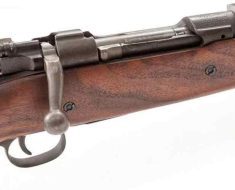“Precision timing for flawless performance.”
Importance of Timing in Revolver Mechanisms
When it comes to operating a revolver, timing is everything. The intricate mechanisms within a revolver must work in perfect synchronization for the firearm to function smoothly and reliably. Understanding the importance of timing in revolver actions is crucial for anyone who owns or operates these firearms.
At the heart of a revolver’s timing is the relationship between the cylinder, the hammer, and the trigger. When the trigger is pulled, the hammer is released, striking the firing pin and igniting the cartridge. The cylinder then rotates, aligning a fresh round with the barrel for the next shot. If any of these actions are even slightly out of sync, the revolver can misfire, jam, or fail to cycle properly.
Proper timing is essential for ensuring the safety and reliability of a revolver. If the cylinder does not rotate fully before the hammer falls, the firing pin may strike the edge of the cartridge primer, causing a misfire. Conversely, if the cylinder rotates too far, the firing pin may strike an empty chamber, resulting in a dry fire. These timing issues can not only be frustrating but also dangerous if they occur during a critical moment.
To maintain proper timing in a revolver, regular maintenance and inspection are key. Cleaning and lubricating the internal components of the firearm can help prevent wear and ensure smooth operation. Additionally, checking for any signs of wear or damage to the timing components, such as the hand or ratchet, is important for catching potential issues before they become serious problems.
In some cases, timing issues in a revolver may require professional gunsmithing to correct. If the timing is consistently off, or if the revolver is experiencing frequent misfires or jams, it is best to have a qualified gunsmith inspect and repair the firearm. Attempting to fix timing issues without the proper knowledge and tools can lead to further damage and potentially unsafe conditions.
When it comes to shooting a revolver, proper technique can also play a role in maintaining good timing. A smooth and consistent trigger pull, along with a firm grip on the firearm, can help ensure that the revolver cycles correctly with each shot. Practicing good shooting habits and familiarizing oneself with the feel of the revolver’s action can help prevent timing issues from occurring.
In conclusion, timing is everything when it comes to operating a revolver. The intricate interplay between the cylinder, hammer, and trigger must be perfectly synchronized for the firearm to function reliably and safely. Regular maintenance, proper technique, and professional gunsmithing when needed are all essential for maintaining good timing in a revolver. By understanding the importance of timing in revolver actions, gun owners can ensure that their firearms operate smoothly and consistently.
Tips for Synchronizing Revolver Actions
Revolver enthusiasts know that timing is everything when it comes to ensuring smooth operation of their firearms. Synchronizing the various actions of a revolver is crucial for reliable performance and accuracy. Whether you are a seasoned shooter or a beginner, understanding how to properly synchronize your revolver’s actions can make a world of difference in your shooting experience.
One of the key components of a revolver’s action is the timing of the cylinder rotation. When the trigger is pulled, the cylinder must rotate smoothly and precisely to align the next chamber with the barrel. If the timing is off, the revolver may misfire or fail to cycle properly. To ensure proper timing, it is important to regularly inspect and maintain the revolver’s internal components, such as the hand and the cylinder stop.
Another important aspect of synchronizing revolver actions is the proper function of the hammer. The hammer must fall cleanly and consistently when the trigger is pulled, without any hesitation or delay. This requires proper adjustment of the hammer spring tension and careful inspection of the hammer and sear engagement surfaces. If the hammer is not synchronized correctly, it can cause misfires or erratic performance.
In addition to the cylinder rotation and hammer function, the trigger pull is also a critical factor in the overall performance of a revolver. A smooth and consistent trigger pull is essential for accurate shooting and quick follow-up shots. To achieve this, it is important to adjust the trigger pull weight and ensure that the trigger mechanism is clean and free of debris. Regularly lubricating the trigger components can also help to maintain a smooth and consistent trigger pull.
Properly synchronizing the various actions of a revolver requires attention to detail and regular maintenance. By taking the time to inspect and adjust the internal components of your revolver, you can ensure that it operates smoothly and reliably every time you pull the trigger. Remember, a well-synchronized revolver is a joy to shoot, while a poorly-timed one can be frustrating and unreliable.
When it comes to synchronizing revolver actions, timing is everything. By paying attention to the details and regularly maintaining your revolver, you can ensure that it performs at its best every time you take it to the range. So take the time to inspect and adjust your revolver’s internal components, and enjoy the smooth and reliable operation that comes with a well-synchronized firearm. Happy shooting!
Common Timing Issues in Revolvers
Revolver enthusiasts know that timing is crucial for smooth operation of their firearms. When the timing of a revolver is off, it can lead to a variety of issues that can affect the gun’s performance and reliability. In this article, we will explore some common timing issues in revolvers and discuss how to synchronize revolver actions for optimal function.
One of the most common timing issues in revolvers is cylinder alignment. When the cylinder is not properly aligned with the barrel, it can cause misfires and accuracy problems. This can be caused by a variety of factors, including worn or damaged parts, improper assembly, or simply the wear and tear of regular use.
Another common timing issue is cylinder rotation. If the cylinder does not rotate smoothly and consistently when the gun is cocked, it can lead to misfires and other malfunctions. This can be caused by a variety of factors, including worn or dirty parts, improper lubrication, or improper adjustment of the revolver’s internal mechanisms.
Timing issues can also affect the timing of the hammer and trigger. If the hammer does not fall at the right moment or the trigger does not release the hammer properly, it can lead to misfires and other problems. This can be caused by a variety of factors, including worn or damaged parts, improper adjustment, or improper assembly of the revolver’s internal mechanisms.
To synchronize revolver actions for smooth operation, it is important to regularly inspect and maintain your firearm. This includes cleaning and lubricating the revolver’s internal mechanisms, checking for worn or damaged parts, and making any necessary adjustments or repairs. Regular maintenance can help prevent timing issues from occurring and ensure that your revolver functions properly when you need it most.
In addition to regular maintenance, it is also important to practice proper shooting techniques to help prevent timing issues. This includes using proper grip and stance, maintaining a consistent trigger pull, and following through with each shot. By practicing good shooting habits, you can help ensure that your revolver operates smoothly and reliably.
If you do encounter timing issues with your revolver, it is important to address them promptly to prevent further problems. This may involve disassembling the revolver to inspect and clean the internal mechanisms, replacing worn or damaged parts, or making adjustments to the revolver’s timing. If you are not comfortable performing these tasks yourself, it is best to seek the assistance of a qualified gunsmith who can help diagnose and repair any timing issues.
In conclusion, timing is everything when it comes to revolver operation. By understanding common timing issues in revolvers and taking steps to synchronize revolver actions for smooth operation, you can help ensure that your firearm functions reliably when you need it most. Remember to regularly inspect and maintain your revolver, practice proper shooting techniques, and address any timing issues promptly to keep your revolver in top condition.
How to Maintain Proper Timing in Revolver
Revolver enthusiasts know that proper timing is crucial for smooth operation of their firearms. Timing refers to the precise alignment of the revolver’s internal components, such as the cylinder, hammer, and trigger, to ensure that the gun functions correctly. When timing is off, the revolver may misfire, jam, or fail to cycle properly. In this article, we will discuss how to maintain proper timing in a revolver to keep it functioning smoothly.
One of the key components that affect timing in a revolver is the hand. The hand is a small, curved piece that rotates the cylinder when the trigger is pulled. If the hand is worn or damaged, it may not engage the cylinder properly, leading to timing issues. To check the hand, remove the side plate of the revolver and inspect it for any signs of wear or damage. If the hand needs to be replaced, it is best to take the revolver to a qualified gunsmith for repair.
Another important component that affects timing is the cylinder stop. The cylinder stop is a small piece that locks the cylinder in place when the gun is cocked. If the cylinder stop is worn or damaged, it may not engage the cylinder properly, causing timing issues. To check the cylinder stop, remove the side plate of the revolver and inspect it for any signs of wear or damage. If the cylinder stop needs to be replaced, it is best to take the revolver to a qualified gunsmith for repair.
Properly maintaining the revolver’s timing also involves regular cleaning and lubrication. Dirt, debris, and lack of lubrication can cause the internal components of the revolver to become sticky or sluggish, leading to timing issues. To prevent this, clean the revolver after each use and apply a light coat of gun oil to the moving parts. This will help keep the revolver functioning smoothly and prevent timing issues.
In addition to regular maintenance, it is important to handle the revolver properly to avoid damaging the internal components. Avoid dry firing the revolver, as this can cause excessive wear on the hand and other components. When loading and unloading the revolver, be sure to do so gently and smoothly to prevent any damage to the timing mechanism.
If you do experience timing issues with your revolver, it is best to take it to a qualified gunsmith for repair. Attempting to fix timing issues yourself can lead to further damage to the revolver and may result in unsafe operation. A gunsmith will have the knowledge and tools necessary to properly diagnose and repair any timing issues with your revolver.
In conclusion, proper timing is essential for the smooth operation of a revolver. By regularly maintaining and cleaning your revolver, handling it properly, and seeking professional help when needed, you can ensure that your revolver functions correctly and safely. Remember, timing is everything when it comes to revolver actions, so take the time to keep your firearm in top condition.
Advantages of Smooth Operation in Revolver Timing
Revolver timing is a critical aspect of a firearm’s operation that often goes unnoticed by many gun owners. However, those who understand the importance of proper timing know that it can make a significant difference in the performance of a revolver. Timing refers to the precise coordination of the revolver’s various moving parts, such as the cylinder, hammer, and trigger, to ensure that the gun functions smoothly and reliably.
One of the key advantages of having a revolver with properly synchronized timing is improved accuracy. When the cylinder rotates smoothly and consistently into the correct position, the bullet is aligned with the barrel, resulting in more precise shots. This is especially important for competitive shooters or those who rely on their revolver for self-defense purposes. A revolver with poor timing can lead to misfires or misaligned shots, which can be dangerous in a high-pressure situation.
In addition to accuracy, smooth revolver timing also contributes to the overall reliability of the firearm. When the cylinder rotates smoothly and the hammer falls at the right moment, the gun is less likely to jam or malfunction. This is crucial for anyone who relies on their revolver for protection or hunting, as a malfunctioning firearm can be a matter of life or death.
Another advantage of synchronized revolver timing is improved speed. When the gun cycles smoothly and consistently, the shooter can fire more quickly and efficiently. This is particularly important in competitive shooting sports where fractions of a second can make a difference between winning and losing. A revolver with precise timing allows the shooter to focus on their aim and trigger control, rather than worrying about the gun’s performance.
Furthermore, smooth revolver timing can also contribute to the longevity of the firearm. When the moving parts of the revolver are properly synchronized, there is less wear and tear on the components. This can help prevent premature breakdowns or the need for costly repairs. By investing in a revolver with good timing, gun owners can ensure that their firearm will last for years to come.
Achieving optimal revolver timing requires regular maintenance and occasional adjustments by a qualified gunsmith. This may involve cleaning and lubricating the moving parts, checking for wear and tear, and making any necessary adjustments to ensure that everything is working together smoothly. While this may require some time and effort, the benefits of having a revolver with precise timing far outweigh the inconvenience.
In conclusion, timing is everything when it comes to revolver operation. Synchronizing the various moving parts of the gun is essential for accuracy, reliability, speed, and longevity. By investing in a revolver with proper timing and maintaining it regularly, gun owners can ensure that their firearm performs at its best when it matters most. So, next time you pick up your revolver, remember that timing is key to a smooth and successful shooting experience.





